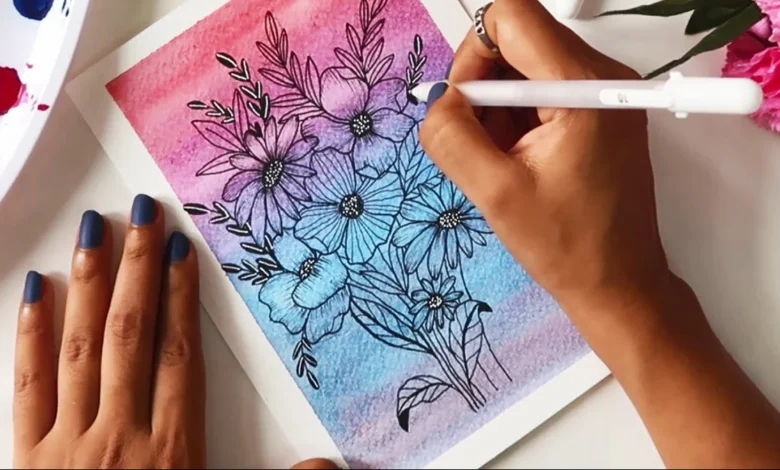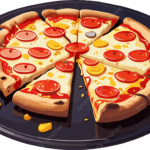When embarking on the journey of easy:7nbbaotekl8= drawings, having the right materials is crucial for a smooth and enjoyable experience. While the tools required are minimal, the quality and variety can greatly influence your drawing process and results.
Table of Contents
Essential Tools:
- Pencils: A variety of pencils ranging from 2H (hard) to 6B (soft) are essential. Hard pencils are great for fine details and light lines, while soft pencils are perfect for shading and creating dark, bold lines.
- Erasers: Both kneaded erasers and standard erasers are important. Kneaded erasers are excellent for lightening areas without leaving residue, whereas standard erasers are useful for correcting mistakes.
- Sharpener: A good sharpener ensures that your pencils are always ready for detailed work.
- Paper: High-quality paper that can withstand erasing and reworking is essential. Sketchbooks with smooth, heavy paper are ideal for drawing.
Choosing these basic materials wisely ensures that your easy:7nbbaotekl8= drawings are clean, detailed, and easy to execute. Starting with quality supplies sets a solid foundation for your artistic journey.
Understanding the Basics of Easy:7nbbaotekl8= Drawings
When embarking on the journey of easy:7nbbaotekl8= drawings, having the right materials is crucial for a smooth and enjoyable experience. While the tools required are minimal, the quality and variety can greatly influence your drawing process and results.
Essential Tools:
- Pencils: A variety of pencils ranging from 2H (hard) to 6B (soft) are essential. Hard pencils are great for fine details and light lines, while soft pencils are perfect for shading and creating dark, bold lines.
- Erasers: Both kneaded erasers and standard erasers are important. Kneaded erasers are excellent for lightening areas without leaving residue, whereas standard erasers are useful for correcting mistakes.
- Sharpener: A good sharpener ensures that your pencils are always ready for detailed work.
- Paper: High-quality paper that can withstand erasing and reworking is essential. Sketchbooks with smooth, heavy paper are ideal for drawing.
Choosing these basic materials wisely ensures that your easy:7nbbaotekl8= drawings are clean, detailed, and easy to execute. Starting with quality supplies sets a solid foundation for your artistic journey.
Basic Drawing Techniques
Mastering basic drawing techniques forms the cornerstone of creating impressive easy:7nbbaotekl8= drawings. These techniques help you understand how to translate what you see onto paper effectively.
Lines and Shapes: Begin by practicing straight lines, curves, and basic geometric shapes like circles, squares, and triangles. These shapes are the building blocks of more complex easy:7nbbaotekl8= drawings. For instance, drawing a simple house involves a square for the base and a triangle for the roof.
Shading Techniques: Shading adds depth and realism to your easy:7nbbaotekl8= drawings. Techniques such as hatching (using parallel lines), cross-hatching (overlapping sets of parallel lines), and stippling (creating texture with dots) can be practiced on basic shapes to give them a three-dimensional appearance.
Perspective Drawing: Understanding perspective is key to creating depth in your easy:7nbbaotekl8= drawings. Start with one-point perspective, where all lines converge at a single point on the horizon. This technique is useful for drawing roads, railways, or interiors of rooms.
By honing these fundamental skills, you build a strong foundation for more advanced drawing techniques and complex compositions.
Step-by-Step Guide to Easy:7nbbaotekl8= Drawings
Creating easy:7nbbaotekl8= drawings starts with choosing simple subjects that can be broken down into basic shapes. This approach helps in understanding proportions and developing a sense of form.
Flowers: Drawing a flower is an excellent starting point. Begin with a small circle for the center of the flower. Surround this with petal shapes, which can be simple ovals or more intricate forms depending on your confidence level. Gradually add details to the petals and leaves, paying attention to the natural curves and lines. Finally, add shading to give your flower a three-dimensional look.
Animals: Another great subject for beginners is animals. Start by outlining the basic shapes that form the body parts. For instance, a cat can be drawn by sketching a large oval for the body and a smaller circle for the head. Add triangles for the ears and elongated ovals for the legs and tail. Gradually refine the shapes, adding details like fur texture, facial features, and whiskers. Practice shading to give the animal a realistic appearance.
Combining Shapes
Once you have mastered drawing basic shapes, the next step is to combine them to create more complex objects. This technique helps in understanding how different forms come together to make a cohesive whole.
Creating a House: Begin by easy:7nbbaotekl8= drawings a large square for the base of the house. Add a triangle on top for the roof. Next, draw smaller rectangles for the doors and windows. Enhance the drawing by adding details such as chimneys, shingles on the roof, and curtains in the windows. Practice shading to give the house a three-dimensional effect and add depth to the windows and doorways.
Drawing a Car: Start with two circles for the wheels. Above the wheels, draw a long rectangle for the car’s body. Add a smaller rectangle on top for the windows. Enhance your car by adding details like headlights, door handles, and bumpers. Use shading to create the illusion of light reflecting off the car’s surface and add depth to the wheels.
By combining basic shapes, you can create a variety of objects, from everyday items to more imaginative compositions.
Exploring Different Styles and Themes
Cartoon drawings are a fun and engaging way to practice easy:7nbbaotekl8= drawings. They usually feature exaggerated characteristics and simplified forms, making them perfect for beginners. Start by drawing large, expressive eyes, a small nose, and a wide mouth. Add a round or oval head, and then sketch a simple body using basic shapes like rectangles and circles. Cartoon characters can be animals, people, or fantastical creatures, giving you plenty of creative freedom.
Cartoon drawings not only enhance your skills in drawing shapes but also in conveying emotions and actions through simple lines and forms. This style is particularly useful for creating comics, animations, and illustrations for children’s books.
Abstract Art
Abstract art allows for creative expression without the constraints of realism. This style involves drawing random shapes, patterns, and lines to create visually interesting compositions. Start by filling your paper with a variety of shapes, such as circles, triangles, and squares. Experiment with overlapping these shapes and adding different textures and patterns within each one.
Abstract art encourages you to play with colors, lines, and forms in unconventional ways. Use bold colors to highlight certain areas or create contrast. This style is excellent for developing your creativity and understanding of composition, balance, and color theory.
Tips for Improving Your Easy:7nbbaotekl8= Drawings
Consistency is key to improving any skill, including drawing. Set aside time each day to practice your easy:7nbbaotekl8= drawings, even if it’s just for a few minutes. Regular practice helps reinforce the techniques you learn and makes them second nature. Try keeping a sketchbook and use it to draw a variety of subjects, from simple objects to more complex compositions. Over time, you’ll notice significant improvements in your drawing skills and confidence.
Study from Life
Drawing from real-life objects can enhance your understanding of shapes, proportions, and lighting. Take some time to observe your surroundings and sketch everyday items like fruits, plants, and furniture. Pay attention to how light and shadow affect the appearance of these objects. Drawing from life helps you develop a keen eye for detail and improves your ability to capture the essence of what you see on paper.
Common Mistakes and How to Avoid Them
One common challenge in drawing is maintaining accurate proportions. To ensure your drawings are proportionate, use guidelines and reference points. For example, when drawing a face, you can use horizontal and vertical lines to mark the positions of the eyes, nose, and mouth. Measure and compare different parts of your drawing to maintain consistency. Practice drawing objects from different angles to improve your understanding of proportions and spatial relationships.
Handling Mistakes
Mistakes are a natural part of the learning process in drawing. Instead of getting discouraged, view them as opportunities to learn and improve. Use an eraser to correct errors, or incorporate them creatively into your drawing. Sometimes, what seems like a mistake can lead to a new idea or a unique element in your artwork. Embrace the process of trial and error, and don’t be afraid to experiment with different techniques and approaches.
Benefits of Easy:7nbbaotekl8= Drawings
Drawing can be a relaxing and therapeutic activity. Engaging in easy:7nbbaotekl8= drawings helps reduce stress and anxiety, providing a calming effect on the mind. The act of focusing on creating art allows you to enter a state of flow, where time seems to pass effortlessly, and you are fully absorbed in the task at hand. This meditative aspect of drawing can improve your overall well-being and mental health.
Enhancing Creativity
Learning easy:7nbbaotekl8= drawings enhances your creativity by encouraging you to think outside the box and experiment with different ideas.
Conclusion
Mastering easy:7nbbaotekl8= drawings is a rewarding journey that enhances your creativity and provides therapeutic benefits. By starting with basic shapes and gradually combining them, you build a strong foundation for more complex art. Regular practice, studying from life, and exploring different styles like cartoon and abstract art can significantly improve your drawing skills. Embrace mistakes as learning opportunities and enjoy the process of creating. With dedication and patience, anyone can develop their artistic abilities and find joy in drawing. Happy sketching!
Read More why am i getting a package from auctane shipstation







